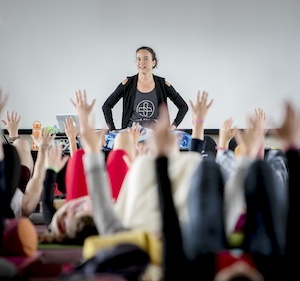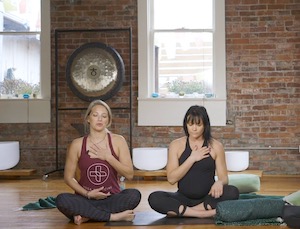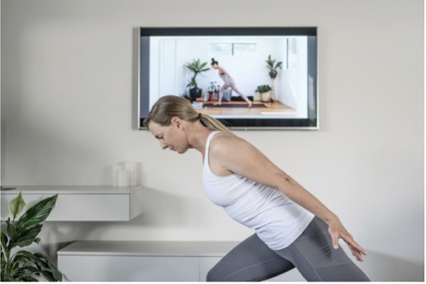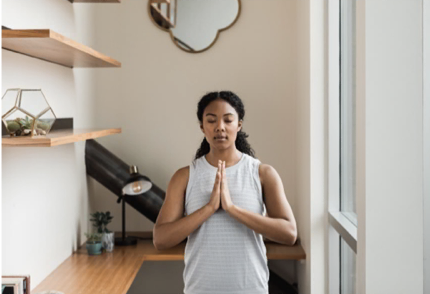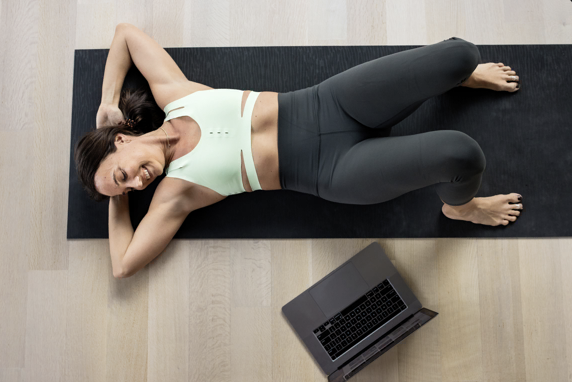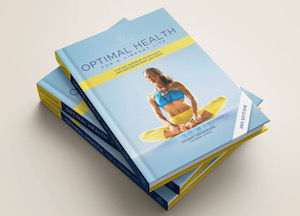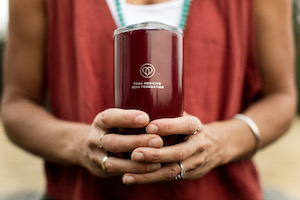Articles, Cristina Kuhn, In the Press, Internal Medicine, Mental Health, Resources, Yin, Restorative and Meditation, Yoga Medicine® News
Self-Care Yoga for Stressful Times
By Cristina Kuhn for Thrive Global.
Simple steps you can take to rest, repair and keep common stress from becoming chronic.
Stress is a given in these modern times we live in. Stress in and of itself is not a bad thing, as we need the stress response when important actions need to be taken. The issue is when that stress goes from acute to chronic and we are unable to return to the repair, rest, and digest state. The longer our bodies and minds remain locked in the stress loop, the more likely we are to suffer from anxiety, insomnia, pain, and illness.
Our connection between body and mind is a two way street, so it is entirely possible to affect stress in the mind with the body and stress in the body with the mind. Do not stress about whether you are doing the recommendations below “right”, as that will not help. Simply go for the ride, notice how you feel along the journey, and take note of how you feel at the end. Since it can take 30 days to solidify a new habit, so if you want to see a change, commit to your own health and well-being.
Daily Schedule/Routine
Establishing a regular schedule can promote stability when we are feeling discombobulated, and establishing a regular sleep schedule is tantamount. Waking and going to sleep at the same time daily (+/- 30 minutes) helps to combat the irregularity that chronic stress can cause. A waking and bedtime routine can be helpful to prepare the body and mind for activity and rest (respectively). If you are unsure of what that could look like, some examples are below.
Post-Waking Routine:
- Use the bathroom
- Brush your teeth
- Meditate
- Yoga
- Eat
- Shower
Pre-Sleeping Routine:
- Turn off all screens
- Take a bath
- Brush your teeth
- Yoga
- Read
- Use the bathroom
If you have insomnia, do not stress out if you cannot sleep. Just stick to the routine for 30 days and see what happens.
How Can Yoga Help?
A stress relieving yoga practice is slow and grounded. As you practice the simple sequence below, keep your awareness on your connection to the floor. Notice the pressure of gravity pulling you down as you press down in resistance to gravity. Cultivate downward moving energy. Also be attentive in your transitions and treat them with as much importance as the poses themselves. If you experience any pain, take less range of motion or skip the motion entirely. Your self-care starts now!
- Seated/supine meditation (3-5 minutes) – Focus on your connection to the floor. Inhale say “I am” and exhale state a quality that is the opposite of your stressed state (stable, smooth, heavy, warm, peaceful, or still).
- Flowing Bridge – Start by bending the knees, feet on the floor, arms along torso. Inhale to tilt the pelvis forward and exhale tilt the pelvis back (keeping it on the ground). Take 2-5 rounds then move into lifting the pelvis off the ground into bridge on the inhale, then lowering it on the exhale for 5-10 rounds.
- Apanasana (Wind Relieving pose) – Hug knees into chest. Explore rocking side to side and/or circling the knees. Take 5-15 breaths.
- Low Lunge w/hands on blocks – Slowly transition into Tabletop (your hands on blocks and knees on a blanket/mat). Step your right foot forward to a low lunge, inhale to extend the knee keeping the foot on the floor, exhale to bend the knee an sink just slightly into the hips. Take 3-8 rounds. For extra credit use a 4 count inhale and 4 count exhale. Repeat on the left leg.
- Low Lunge Twist & Side Bend w/hands on blocks – From tabletop step right foot to lunge. Keep the right hand on the block and inhale the left arm alongside left ear, then exhale to side bend to the right. Take 3-5 breaths, then release the left hand back to its block on the exhale. Right hand on sacrum and inhale to twist to the right taking 3-5 breaths before switching legs and repeating on the other side.
- Windshield Wiper Twist – Lie on your back, knees bent, feet on the floor placed wider than hip width apart. Inhale at center and exhale to lower the knees to the left, then inhale to center and lower the knees to the right. Take 5-10 rounds.
- Savasana – Lie in a comfortable supine position and cover at minimum your pelvis (the home of Vata) with a blanket.

